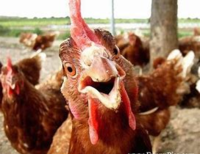- Thread starter
- #11
tspataro
Chirping
Thanks all. Nervous about making it through the first night. The temp seems to be holding right around 95. Hope they’re all still with us in the morning!
Follow along with the video below to see how to install our site as a web app on your home screen.
Note: This feature may not be available in some browsers.
Congratulations! Are your chicks all active and running around? Are there any that are standing still with eyes half closed? Any that are stretched out sleeping more than they are running around? Have you made sure they all know how to get a drink?
I picked up a couple of chicks from TSC on Wednesday that had come from the post office minutes before I got to the store. I got them home and they seemed to go into a sort of stress shock. The first two hours they got progressively more lethargic, not the least bit interested in their surroundings.
I got out the sugar and Nutri-drench and mixed up some sugar water. I then took a small syringe and dosed both chicks every hour with the warm sugar water mixed with a little Nutri-drench. By 9pm, they had not revived. Although I've been through this before, I was very worried they'd not survive the night.
Next morning, they were completely different chicks, lively, curious, and famished. They ate their fermented feed like little pigs, and ate all day long yesterday.
I can't stress enough that any chick that appears "droopy" should be treated immediately for shipping stress shock. It can show up right away, or delay for a day or two. The warm sugar water, like a glucose IV for a human victim of shock, can save a chick's life and save a new chick mom/pop heartbreak and grief.
Be very careful using a syringe, they can aspirate the liquid.I then took a small syringe and dosed both chicks every hour
They need a cooler place too.The temp seems to be holding right around 95

Welcome to BYC! Cute chicks, did you buy females or are they straight run? If they are you may end up with some roos.
Good luck raising your flock!
Hers some more info with good pics:The chick's esophagus (food and water intake) is on the right side of the throat.
